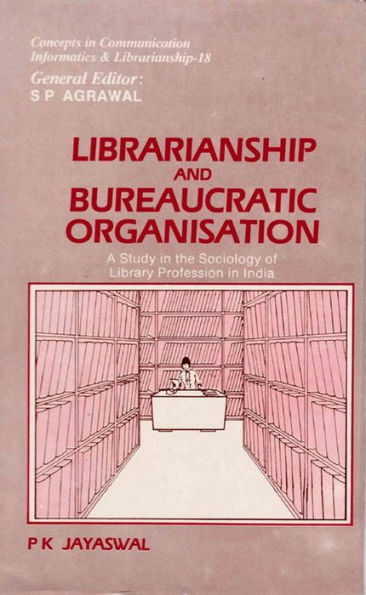Librarianship and Bureaucratic Organisation: A Study in the Sociology of Library Profession in India (Concepts in Communication Informatics and Librarianship-18)
Climate changes in response to changes in the global energy balance. On the broadest scale, the rate at which energy is received from the sun and the rate at which it is lost to space determine the equilibrium temperature and climate of Earth. This energy is then distributed around the globe by winds, ocean currents, and other mechanisms to affect the climates of different regions. Factors that can shape climate are called climate forcings or "forcing mechanisms". These include such processes as variations in solar radiation, deviations in the Earth's orbit, mountain-building and continental drift, and changes in greenhouse gas concentrations. There are a variety of climate change feedbacks that can either amplify or diminish the initial forcing. Some parts of the climate system, such as the oceans and ice caps, respond slowly in reaction to climate forcings, while others respond more quickly. Forcing mechanisms can be either "internal" or "external". Internal forcing mechanisms are natural processes within the climate system itself (e.g., the meridional overturning circulation). External forcing mechanisms can be either natural (e.g., changes in solar output) or anthropogenic (e.g., increased emissions of greenhouse gases).
1142702089
Librarianship and Bureaucratic Organisation: A Study in the Sociology of Library Profession in India (Concepts in Communication Informatics and Librarianship-18)
Climate changes in response to changes in the global energy balance. On the broadest scale, the rate at which energy is received from the sun and the rate at which it is lost to space determine the equilibrium temperature and climate of Earth. This energy is then distributed around the globe by winds, ocean currents, and other mechanisms to affect the climates of different regions. Factors that can shape climate are called climate forcings or "forcing mechanisms". These include such processes as variations in solar radiation, deviations in the Earth's orbit, mountain-building and continental drift, and changes in greenhouse gas concentrations. There are a variety of climate change feedbacks that can either amplify or diminish the initial forcing. Some parts of the climate system, such as the oceans and ice caps, respond slowly in reaction to climate forcings, while others respond more quickly. Forcing mechanisms can be either "internal" or "external". Internal forcing mechanisms are natural processes within the climate system itself (e.g., the meridional overturning circulation). External forcing mechanisms can be either natural (e.g., changes in solar output) or anthropogenic (e.g., increased emissions of greenhouse gases).
449.99
In Stock
5
1

Librarianship and Bureaucratic Organisation: A Study in the Sociology of Library Profession in India (Concepts in Communication Informatics and Librarianship-18)
192
Librarianship and Bureaucratic Organisation: A Study in the Sociology of Library Profession in India (Concepts in Communication Informatics and Librarianship-18)
192
449.99
In Stock

Product Details
| ISBN-13: | 9789390623105 |
|---|---|
| Publisher: | Arts & Science Academic Publishing |
| Publication date: | 06/30/2021 |
| Sold by: | Barnes & Noble |
| Format: | eBook |
| Pages: | 192 |
| File size: | 2 MB |
About the Author
From the B&N Reads Blog
